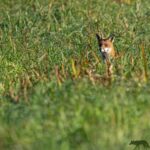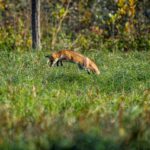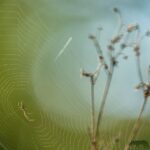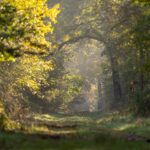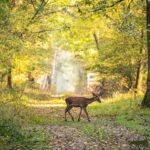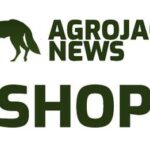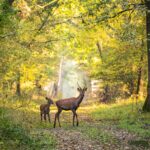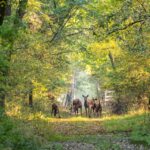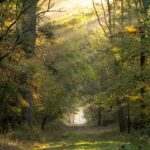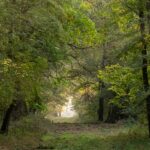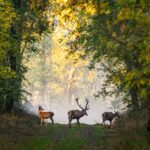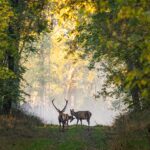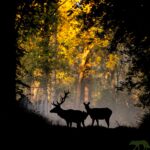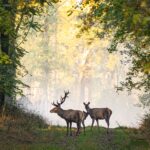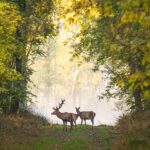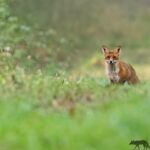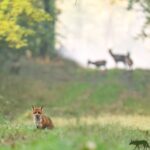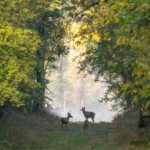Nature protection
Great Bustards in Kiskunság
For me, the Upper Kiskunság area is very important. I lived my life here. That is why I consider it important to try to place this area in the center of attention. When we talk about the most beautiful places in Hungary, we mainly think of Aggtelek, Gemenc, Mecsek, etc. Most of our country is a flat, desert area, which makes our natural values completely unique, even compared to the immediate neighboring countries.

Hortobágy comes to mind primarily from the desert area. I, on the other hand, would now target a much smaller area. Most of my recordings were made in the protected or Natura 2000 area near Kunszentmiklós. (Apaypuszta, Ürbőpuszta, Hosszú-hát). The area is home to many protected and highly protected animal species.
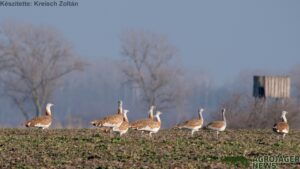
Among these, I would like to single out the best ones:
We are talking about a highly protected bird species. Great Bustards are the heaviest flying birds in Europe. An adult rooster can weigh up to 16 kg. The body weight of eggs is two-thirds of this. At the beginning of the 1900s, there were about 13,000 great bustards in Hungary. This number fell to less than a thousand by the 1970s. This was caused by several human-generated changes. Mainly the inclusion of natural desert habitats in large-scale agricultural production. The swampy areas were drained, and most of the pastures were plowed up.
The use of plant protection agents and the spread of large-scale machinery have increased drastically. Until 1969, grouse were also a huntable species. From 1969, however, it was declared a highly protected species. Returning to the area, the Kiskunság National Park was founded in 1975. Since then, many measures have been taken by the relevant ministries and the workers of national parks have put a lot of work into saving this species from complete extinction.

Today, their stock has started to grow. Their number rose to over 1,300. In other words, the number of individuals increased by 30-40% in 50 years. From this we can also see that it takes much less time to destroy than to restore. In 70 years, the herd was reduced to a tenth, and in 50 years it was able to grow by 30%. However, this number is still huge. For comparison, 7 badgers are counted in neighboring Serbia.

Bustard eggs hatch once a year. She lays two eggs. Thus, we are not talking about an intensively reproducing species. Therefore, it is very important that we do not disturb them during their mating season (roaring) and, more importantly, during their breeding season. The breeding season is complicated by the fact that they often lay their eggs on the ground in agricultural crops. In such cases, mowing and harvesting are their biggest enemies.
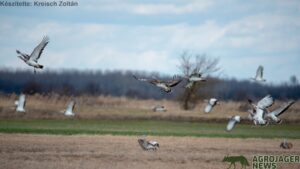
The workers of the national park try to work closely with the farmers so that as few nests as possible are damaged during harvesting and mowing. In many cases, the eggs from the disturbed nests are taken to a hatchery, and as a result of a long work, the hatchlings are tried to be reintroduced to the wild so that they can live in their natural habitat. In addition to this, great emphasis is placed on reducing predators in the breeding areas.

In order to raise awareness about grouse, tours are organized several times every year during the breeding season. It is very important that if you want to observe these animals yourself, do not go near them! Try to cause them the least disturbance. I directly added a zoom part in my film. I want to make it clear that even if the shot looks close, it was taken from a long distance away. In many cases, I used nine times magnification for the recordings. However, this can show you if you go out to the roads near the area, from there you can get a close-up picture of them with an 8x or 10x telescope, and you won’t disturb them at all.

I recommend everyone to see this wonderful landscape! However, I ask everyone to be very careful about this landscape! Do not enter the area by car, but also on foot. Use the roads! Unfortunately, there was an example of them driving in with a car. It should be known that since the grouse are a highly protected species, their value is HUF 1 million. Disturbing them can also be considered a crime. However, I would like respect for nature, not fines, to keep me from disturbing these wonderful animals. If you are interested in more information about this area and these animals, then go on tours organized by the Directorate of the Kiskunság National Park and the Directorate of the Danube-Ipoly National Park. The staff of the national parks can provide a lot of information there. There are still such tours.
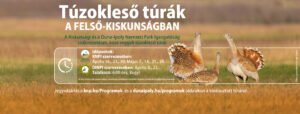
Written and photographed by Zoltán Kreisch
Thanks to the workers of the national park, – Györfy Hunor – Nature conservation officer (KKNPI) – Gábor Kocsán – Nature conservation officer (Túzok Life program) – Péter Ócsai – Nature conservation officer (DINPI)
More detailed information about the organized tours is available here on the websites of the Kiskunság National Park Directorate and the Danube-Ipoly National Park Directorate
The Facebook page of amateur wildlife photographer Zoltán Kreisch is available here
Hunting
Vadászat fényképezőgéppel: Retkes Tamás Gemencből jelentkezett – GALÉRIA
 Nagyon vágytam már az erdőbe, mert utoljára szeptember közepén jártam kint. Azóta folyamatosan vadásztak, így nem tudtam fényképezni. Most, 23-án, végre sikerült összehozni és nagyon jó mozgás volt. Reggel, már napkelte előtt kimentem, hogy az első fényeknél fényképezzek. Az egyik nyiladékon, a távolban, egy spíszer bikát vettem észre, majd egy tehenet és borját pillantottam meg, ahogy átváltanak előttem.
Nagyon vágytam már az erdőbe, mert utoljára szeptember közepén jártam kint. Azóta folyamatosan vadásztak, így nem tudtam fényképezni. Most, 23-án, végre sikerült összehozni és nagyon jó mozgás volt. Reggel, már napkelte előtt kimentem, hogy az első fényeknél fényképezzek. Az egyik nyiladékon, a távolban, egy spíszer bikát vettem észre, majd egy tehenet és borját pillantottam meg, ahogy átváltanak előttem.

Aztán, ahogy fotóztam őket, egyszer csak egy vörös róka jött be a látómezőmbe. Gyorsan ráfókuszáltam, hogy az előtérben a rókát lássuk, miközben a háttérben a szarvasok figyelnek.
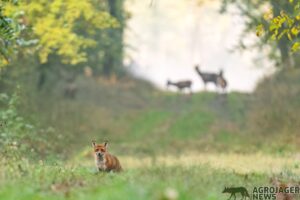
Sikerült is jó pár fotó, ahogy közeledik felém a róka. Aztán egyszer csak a bal oldalról még egy szarvasbika váltott ki, a háttérben álló a szarvasokkal. Ekkor visszaálltam a szarvasokra és készítettem megint pár fotót.
Mikor továbbindultam, nagyon jó fények fogadtak és gyönyörű volt az őszi erdő, állatok nélkül is. Így készítettem pár ilyen fotót is.
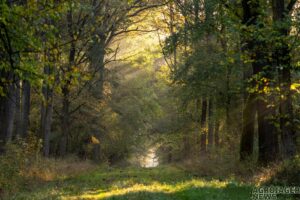
Egy másik nyiladékon, jobb oldalról, fiatal bikák, spíszerek és tarvadak borjaikkal váltottak újra ki és legeltek előttem, ahol megint csak több fotót sikerült lőnöm róluk. Innen továbbsurrantam és megint egy szép erdőrészletet örökítettem meg , majd arra lettem figyelmes, hogy több pókháló csillog a reggeli fényben. Így egy kicsit megálltam ezeket is fotózni.
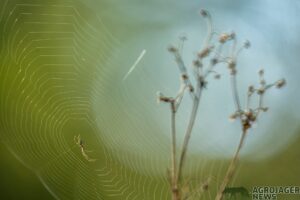
Már kifelé vettem az irányt, mikor egy nagyobb tisztáson, a nagy fűben, egy róka vöröslött már messziről. Gyorsan közelebb cserkeltem és lőttem pár fotót, ahogy éppen a reggelijét kereste. Persze, vadászott. Ezek után még egy szürkegémet, hattyúkat és egy kárókatonát örökítettem meg.
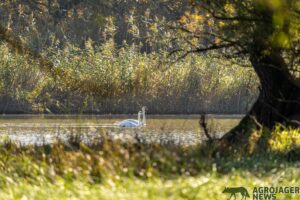
Végül dél körül értem ki az erdőből. Visszaindultam az autómhoz és örültem, hogy ennyi mindent sikerült fotóznom.
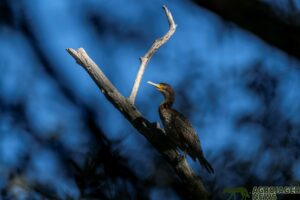
Jól esett a 18 000 lépésszám körüli séta, a cserkelés is, hogy friss levegőn lehettem, messze az emberektől, kiszakadva a város nyüzsgésétől. Így ez a hét, kedden úgy indulhatott, hogy feltöltődve tudtam munkába állni!
Írta és fényképezte:
Retkes Tamás természetfotós
Nature protection
The spring bird migration is coming to an end
The spring bird migration is slowly coming to an end
The borders of the Körös-Maros National Park have been busy with birds for weeks. The spring bird migration is slowly coming to an end. The species that winter here but breed further north than us have set off, and those that nest here have returned from their long migration.
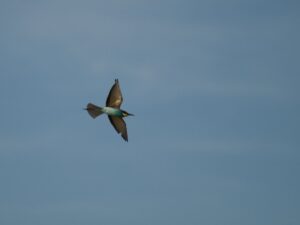
Photo: Gyurgyalag. Balla Tihamér – Körös-Maros National Park
In the second half of April in the Kígyósi plain, we could barely meet duck species that winter but breed further north. However, the ducks that breed here have come. The situation is similar for birds of prey, the winterers have left, and the blue terns, goshawks and gray grebes have arrived. We are still waiting for our songbird, the small warbler, which will return at the latest, usually at the beginning or middle of May. Among the shorebirds nesting further north from us, we saw a few more mountain sandpipers and shield terns in the last week of April. The vast majority of our birds have arrived by the end of the month, chickadees, great gobies, red-footed wagtails, and sandpipers populate the landscape.
The classic spring bird migration is also coming to an end in Kis-Sárrét. There are even more northern guests staying here, but they are slowly moving away. Ashy meadowlarks have recently returned from their wintering grounds, and some specimens are already breeding in the vicinity of last year’s nesting grounds. Smaller or larger flocks of bastard warblers, sooty warblers and white-winged Tern regularly pass through the area. In the past few days, we have observed the first comet herons, and the first specimens of european roller have also arrived. Among the songbirds, the thorn-stinging warblers also just arrived, but an unusually early small guard warbler was also found.
On the Cserebökény steppes, in the middle of March, there were 6,000 chickadees, 2,500 golden plovers, and 4,000 starlings at the water bodies. In addition to the hundreds of pájssoskankó, there were 90 large goda, 66 large pólings and 110 small pólings in the area. From March 20, the storks, gulipans, redshank and the first white and black storks arrived continuously. At the beginning of April, among the species wintering here, we saw five more grebe buzzards, ten blue pied buntings and a large warbler. The blue pigeons that visit the steppes for the winter have been replaced by the returning ringed pigeons. We observed the first swallows on April 3rd, and by April 10th their number had increased nicely. This is when the ashy warblers arrived and the pale warblers marched. In mid-April, the first flocks of blue vultures returned from their wintering grounds in South Africa, and soon after, the european roller also appeared. Yellow thrushes and cuckoos are speaking, and we also saw a small warbler. By April 25, all the migratory birds had arrived, except for the warblers.
Among the shorebirds in the Kardoskúti plain, the migration of the shield-billed grebe was strong even in the last week of April. The peak was observed on April 20, when we counted 1,620 specimens. They were the most numerous of the party birds, after the chickadees and goldfinches. The number of mountain runners is also constantly increasing, so far the highest number was 111, the peak migration is expected at the beginning of May. It is interesting that we also managed to observe some small sandpipers, Temminck’s sandpipers and lake sandpipers joining the mountain sandpipers. By the middle of April, the blue meadowlarks had migrated north and some gray meadowlarks were found. Among the songbirds, the migration of rusty-throated plovers has begun, and in the last week of April, the first thorn-stinging warblers also arrived. The cuckoos have been migrating for quite some time and have been making their voices heard intensively.
Many bird species that spent the winter in the south, even south of the Equator, have also returned to the Makó landscape of the Körös-Maros National Park. In the last week of April, we spotted the first cuckoos, warblers, and warblers of the year. Among the birds of prey, the first blue warblers have just appeared. There are also gray herons in the area, but they only station here and then move on to their breeding grounds.
The spring bird migration on the Dévaványa-Ecseg wastelands was spectacular in previous years, but the situation is different last year and this year. In recent weeks, some bird movement has been barely perceptible. The reason for this is that there was little rainfall, so there are no internal water spots or standing water on the lawn. Every now and then we see a small group of shield-winged warblers, 10-20 golden warblers, some chicks and a single specimen of the later breeding red-legged warblers. Gatherings were spectacularly missed. The warblers have returned to the forests, the warblers and the rusty pike are singing, and the cuckoos can already be heard. The forests are also not as saturated as before: there are fewer gorse, tit, and sable. On the other hand, greater numbers of short-eared owls wintered in the Dévaványa area, and ten pairs had already built nests.
Source: Körös-Maros National Park
Nature protection
Corn buntings are singings in the landscapes of the Southern Great Plains
Corn buntings are singings in the landscapes of the Southern Great Plains
In many places in the Körös-Maros National Park, the characteristic sounds of spring include the song of the corn bunting (Emberiza calandra). The largest domestic sparrow (with a more stocky appearance than a sparrow) can be seen and heard mainly in agricultural areas.
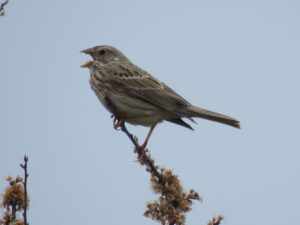
Photo: István Biró
Its song sounds more like a rough chirping, which it mainly hears from a protruding place, the top of a bush, some kind of post, stake, or perhaps a stronger plant stem.
The main characteristic of the bird is that experts consider it a so-called indicator species. Indicator species have special environmental and ecological needs, so the size of their stocks reflects the favorable or unfavorable changes in the given area. Another important feature of the indicator species is that it is easy to recognize, easy to determine, and its appearance cannot be confused with other species, so even the lay observer has a good chance of recognizing it. The size of their holdings can therefore be estimated and calculated more easily.
Are you looking for reliable binoculars? Click on the picture!
Based on its habitat requirements, the gorse can primarily be associated with extensive, extensively cultivated agricultural areas, where a diverse habitat structure, fields, lawns, shrubs, and weedy patches can all be found. In these places, the use of chemicals and fertilizers is minimal, thanks to which a rich supply of food is available to the sorrels. In Hungary, too, it is mainly found in the flat and low hilly areas where the listed characteristics are typical.
It spawns twice a year, laying three to six eggs. It builds its nest close to the ground, under bushes or in dense vegetation. It is mainly insectivorous during the budding period, but except for this period, its food consists of various seeds, mainly weed seeds. It only migrates to the southern regions during harsh winters, so in the mild winters of recent years, we could meet it in small groups in the winter as well.
The agro-environmental protection measures and tender opportunities of recent years ensure the living conditions of the gorse in the longer term, along with many other bird species.
Source: Körös-Maros National Park








